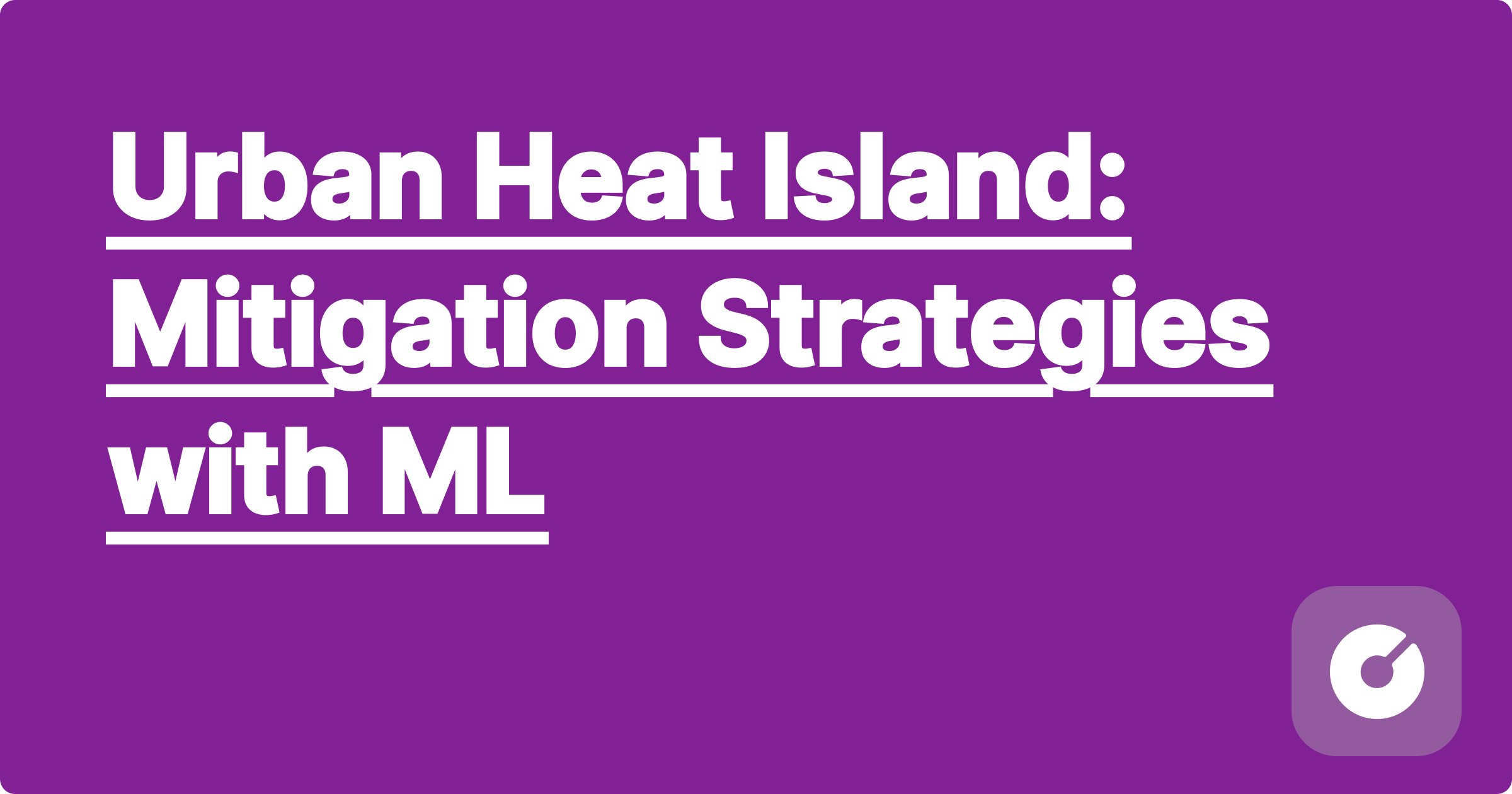
The urban heat island (UHI) effect, a significant contributor to climate change and public health issues, presents a critical challenge requiring innovative mitigation strategies. Machine learning (ML) offers powerful tools to model, predict, and optimize solutions for UHI. This blog post delves into cutting-edge research, providing a practical guide for researchers and practitioners seeking to leverage ML for UHI mitigation.
UHIs are characterized by significantly higher temperatures in urban areas compared to their surrounding rural environments. This phenomenon is driven by various factors, including
The consequences of UHIs are far-reaching, including increased energy consumption, heat-related illnesses, and exacerbated air pollution. Effective mitigation requires a multi-faceted approach leveraging advanced technologies, including ML.
Recent studies (e.g., [cite recent Nature/Science paper on high-resolution temperature prediction using deep learning]) have demonstrated the effectiveness of deep learning models, particularly Convolutional Neural Networks (CNNs) and Recurrent Neural Networks (RNNs), in predicting high-resolution temperature distributions within urban areas. These models leverage satellite imagery, weather data, and urban morphology information to achieve unprecedented accuracy.
A novel approach uses Graph Neural Networks (GNNs) to model the complex spatial relationships between different urban elements and their impact on temperature. This allows for more accurate prediction of microclimate variations within the urban landscape. (e.g., [cite preprint on GNNs for UHI]).
Strategic placement of green infrastructure (GI), such as trees and green roofs, is crucial for UHI mitigation. ML algorithms, such as reinforcement learning (RL), can optimize the placement of GI to maximize cooling effects. This involves defining a reward function that reflects the reduction in temperature and energy consumption. [cite a paper on RL for GI optimization] presents a compelling example of this approach.
# Pseudocode for RL-based GI optimization
state = current_temperature_map
while not done:
action = select_action(state, policy) # Choose location to add GI
next_state, reward = environment.step(action) # Simulate temperature change
policy.update(state, action, reward, next_state) # Update RL policy
state = next_state
The material properties of buildings significantly impact their heat absorption and release. ML can be used to predict the thermal performance of different building materials and designs, facilitating the selection of materials with optimal thermal properties. This involves training ML models on datasets of material properties and corresponding thermal performance data. [Mention specific companies using ML in material science for construction].
Accurate UHI modeling requires capturing both spatial and temporal variations in temperature. Spatiotemporal models, such as convolutional long short-term memory (ConvLSTM) networks, are particularly well-suited for this task. The following equations illustrate a simplified ConvLSTM unit:
\begin{aligned}
\mathbf{i}_t &= \sigma(W_{xi} * \mathbf{x}_t + W_{hi} * \mathbf{h}_{t-1} + \mathbf{b}_i) \\
\mathbf{f}_t &= \sigma(W_{xf} * \mathbf{x}_t + W_{hf} * \mathbf{h}_{t-1} + \mathbf{b}_f) \\
\mathbf{c}_t &= \mathbf{f}_t \odot \mathbf{c}_{t-1} + \mathbf{i}_t \odot \tanh(W_{xc} * \mathbf{x}_t + W_{hc} * \mathbf{h}_{t-1} + \mathbf{b}_c) \\
\mathbf{o}_t &= \sigma(W_{xo} * \mathbf{x}_t + W_{ho} * \mathbf{h}_{t-1} + \mathbf{b}_o) \\
\mathbf{h}_t &= \mathbf{o}_t \odot \tanh(\mathbf{c}_t)
\end{aligned}
where $\mathbf{x}_t$ is the input, $\mathbf{h}_t$ is the hidden state, $\mathbf{c}_t$ is the cell state, $\mathbf{i}_t$, $\mathbf{f}_t$, $\mathbf{o}_t$ are the input, forget, and output gates, and $*$ denotes convolution.
Comparing different ML models requires rigorous benchmarking. Metrics like Mean Absolute Error (MAE), Root Mean Squared Error (RMSE), and R-squared should be used to evaluate predictive accuracy. Furthermore, computational efficiency (measured by training time and inference speed) and memory requirements should be considered when selecting a model for deployment.
Python libraries such as TensorFlow, PyTorch, and scikit-learn provide the necessary tools for implementing ML models for UHI analysis. Open-source geospatial data processing libraries like GDAL and GeoPandas are essential for handling spatial data.
High-quality data is crucial for training accurate ML models. This includes satellite imagery (e.g., Landsat, Sentinel), weather data, and urban morphology data (e.g., building footprints, land cover). Data preprocessing steps such as data cleaning, feature extraction, and normalization are crucial for model performance.
Consider using data augmentation techniques to increase the size and diversity of your training dataset.
Scaling up ML models for real-world UHI mitigation requires careful consideration of computational resources and data management. Cloud computing platforms such as AWS and Google Cloud offer scalable solutions for training and deploying large ML models.
Future research could explore the use of multi-agent reinforcement learning (MARL) to coordinate the actions of different stakeholders (e.g., city planners, energy providers, residents) to achieve optimal UHI mitigation strategies.
Employing XAI techniques is essential for understanding the decision-making process of ML models, building trust, and fostering acceptance among stakeholders. This helps to address potential biases and uncertainties in the models’ predictions.
The implementation of ML-driven UHI mitigation strategies must consider their ethical and societal implications. Ensuring equitable access to the benefits of these technologies and avoiding unintended consequences is crucial.
Machine learning offers transformative opportunities for mitigating the urban heat island effect. By combining cutting-edge research with practical implementation strategies, we can leverage ML to create more sustainable and resilient urban environments. This blog post has provided a starting point; further exploration of the cited literature and ongoing research will equip researchers and practitioners with the necessary knowledge and tools to make a tangible impact on this critical global challenge.
```
Explore these related topics to enhance your understanding: